Two weeks earlier, I had visited Centennial Park on the lookout for some birds. A friend Ken Grittiths had posted some nice photos on social media, including some unusual ducks and a number of owl species. On my visit I had been completely unable to spot any of these birds. The week before, Ken and accompanied me on a trip to Malabar Headland, and he had offered invite me to join him at centennial Park on his next visit. So when the offer came, I was happy to join him.
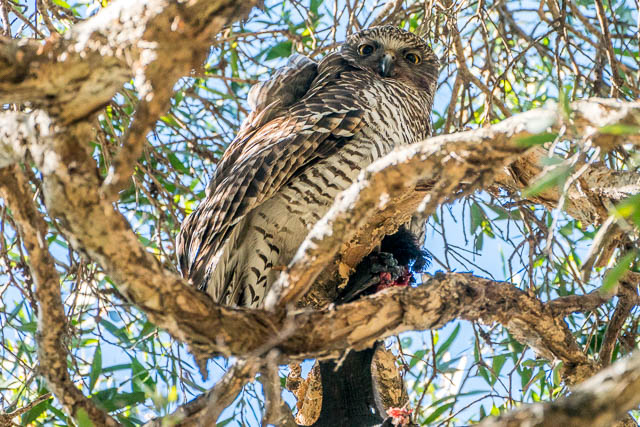
Powerful Owl
I arrived a little early, and by the time he had arrived, I had already spotted one of my target species – some Pink-eared Ducks.
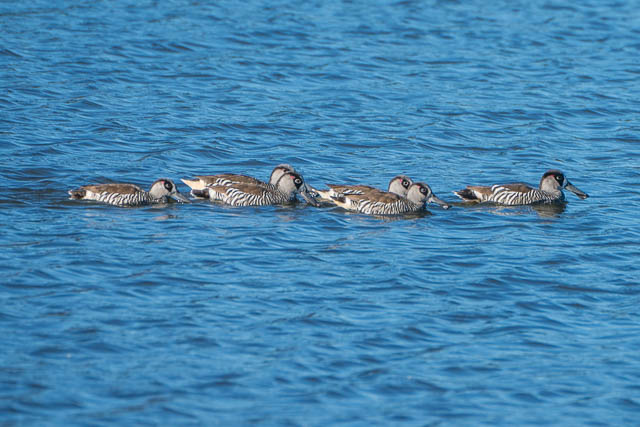
These birds seem to be very shy – and seem to stay well away from people. They were paddling a long way out in the main duck pond. It was interesting watching them – we could see two groups, one of six ducks and the other of two ducks. Both groups, the birds were swimming around in a circle. We later were talking to a birder that told us that by doing this the ducks create a vortex and this brings up food from the bottom, which they filter using their beaks.


Near the pond were some Corellas getting up to some mischief.
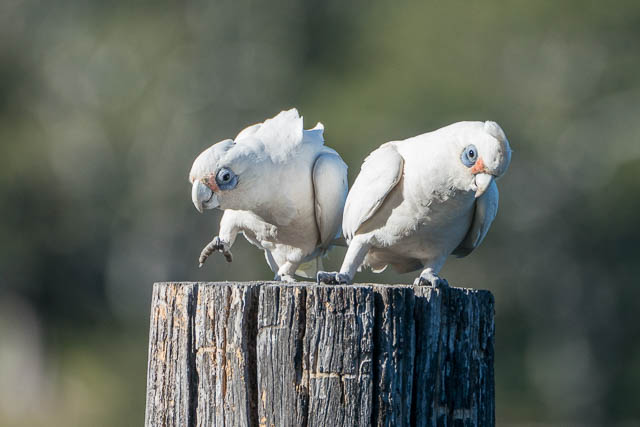

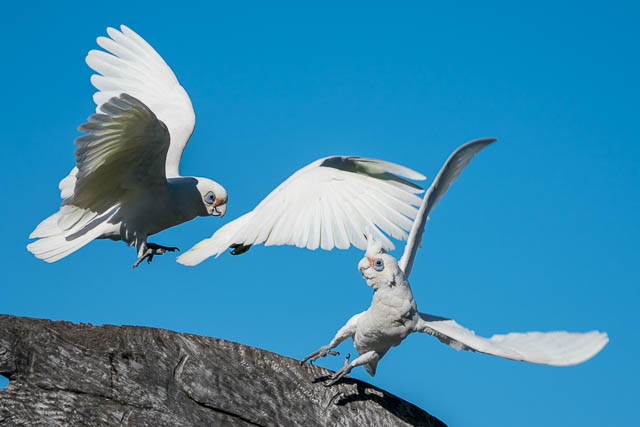
Not far away, high in a tree was a Barn Owl. It was the first of three we saw on the day.

By this time, It had become very windy at the park. We then moved off to look for some Powerful Owls. I knew their rough location, where they usually roost during the daytime, but had not been able to spot them on my previous trip. Ken, had been more successful on his earlier visit. We didn’t have to look to hard this time – below the trees they are normally in was a bird photographer (binoculars and a long lens are a bit of a giveaway). He was happy to point out the birds and also their nest hole in a nearby tree. One of the owls was clutching a Flying Fox it had caught. It looks like it was being saved to feed their chick that evening.
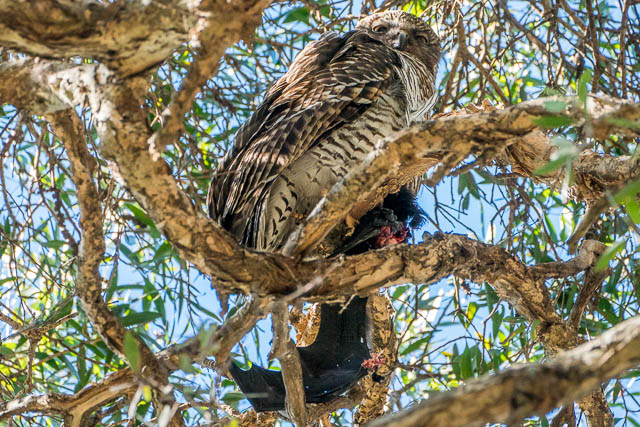
The other one was a bit hard to photograph – partly hidden by branches.

We then continued in search of more Barn Owls. We found two on the far side of the park, again perched high in trees. A one of the spots, we met a friend of Ken’s who was also out photographing birds.

We next made our way back to the Duck Pond to see if the Pink-eared Ducks were nearer to the back – perhaps slightly closer?
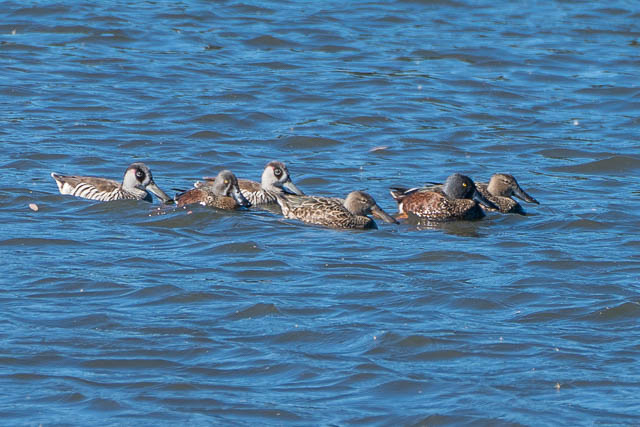
By this time, it was even windier, and quite cold, so we made one last walk around the Duck Pond. Ken spotted a White-necked Heron hiding in a group of Ibis. This is the first time I have seen one of these herons in the Sydney region.

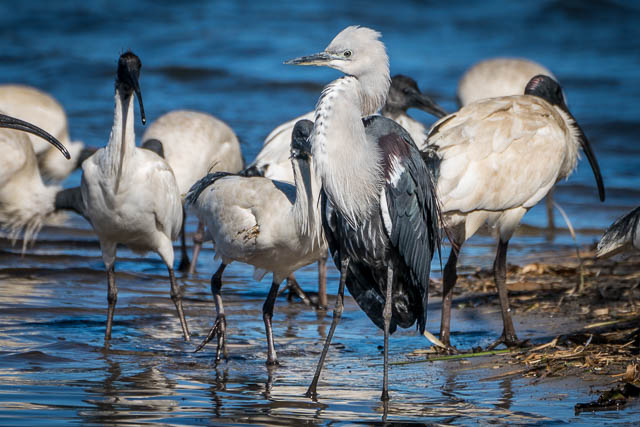

The last bird we were looking for was a pit of nesting Tawny Frogmouths. After a bit of searching, we saw their nest in a tree and one of the birds sitting there- presumably on some eggs.

We then had lunch and headed back to the bus stop for a bus home. It had been a good day.
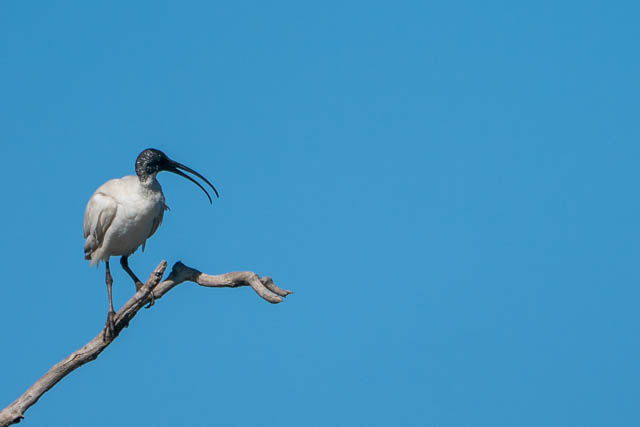

Very nice blog David! I found your site while trying to search for ‘good spots for bird photography’. I am a total newbie when it comes to bird photographer and your blog has really inspired me to shoot more. I am sure you’ve got some really long glass. I just recently acquired a 100-400mm to be paired with the 7D mk ii but I am not sure if the 400m is long enough to get closer to shy birds. I don’t want to spend too much yet on extenders and longer lenses at this stage. BUt surely I am enjoying my first few outings. I might go an visit Nurragingy soon thought I am not sure if the pond hasn’t dried out yet due to drought.
I think the ponds at Nurragingy will be oK for a while – but the water is getting a bit scanky. The large ornamental ponds are filled up from the water supply – these gets ducks, cormorants, ibis etc. I use a 100-400 mm zoom mostly with a 1.4x TC (which gives me 560 mm on full frame). I think the minimum for birds would be 300 mm on a crop body like a 7D. The 100-400 should be fine. The eBird site is good for finding good bird photography locations. Zoom in to your local area on the Explore Hotspots section.